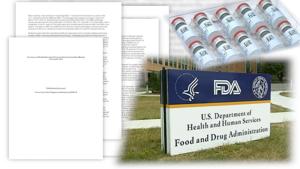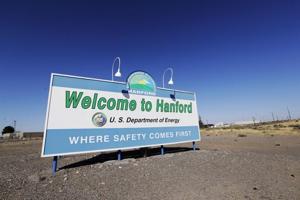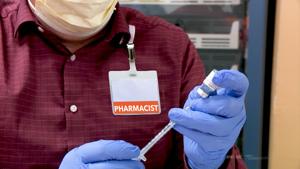
With the U.S. pause of Johnson & Johnson’s COVID-19 vaccine stretched into a second week, authorities are weighing whether to resume the shots the way European regulators decided to — with warnings of a “very rare” risk.
New guidance is expected late Friday after a government advisory panel deliberates a possible link between J&J’s shot and a small number of vaccine recipients who developed highly unusual blood clots.
Health officials said Friday they were aware of 15 cases of the unusual clots since the government authorized use of the vaccine and nearly 8 million shots were given. All were women, most of them under 50. Three died, and seven remain hospitalized.
The Centers for Disease Control and Prevention is looking to its advisers to help them evaluate the numbers and determine how big the vaccine’s risk really is — and how to balance that risk against the need to vaccinate millions against a virus that’s still infecting tens of thousands of Americans every day.
“I appreciate the importance of acting swiftly” on that advice, said CDC Director Dr. Rochelle Walensky. She hoped for “a recommendation that takes into account the risk versus reward” of using J&J’s single-dose vaccine.
European regulators earlier this week allowed the rollout of J&J’s shot after concluding those benefits outweigh what appears to be an exceedingly rare risk, and many U.S. health experts agree. But one consideration for the CDC panel is whether healthy younger adults who are less likely to suffer severe COVID-19 might be better off with a different vaccine.
“The population, the community, needs to be informed of what those risks are so that they can make informed decisions,” said vaccine expert Naor Bar-Zeev of Johns Hopkins Bloomberg School of Public Health, who will be watching Friday’s debate.
At issue is a weird kind of blood clot that forms in unusual places, such as veins that drain blood from the brain, and in patients with abnormally low levels of the platelets that form clots. The CDC and Food and Drug Administration initially spotted six people who developed such clots one to three weeks after J&J vaccination. On Friday, health officials said nine more cases came to light in the last week or so.
The needle-in-a-haystack reports raised alarm because European regulators already had uncovered similar rare clots among recipients of another COVID-19 vaccine, from AstraZeneca. The AstraZeneca and J&J shots, while not identical, are made with the same technology.
European scientists found clues that an abnormal platelet-harming immune response to AstraZeneca’s vaccine might be to blame — and if so, then doctors should avoid the most common clot treatment, a blood thinner called heparin.
That added to U.S. authorities’ urgency in pausing J&J vaccinations so they could tell doctors how to diagnose and treat these rare clots. Several initial patients were treated with heparin before anyone realized that might harm instead of help.
Two-dose vaccines from Pfizer and Moderna, which are made differently and haven’t been linked to clot risks, are the mainstay of the U.S. vaccination effort. But J&J mass vaccination clinics were canceled after the April 13 pause, and many states had been counting on the one-and-done option to also help protect hard-to-reach populations including people who are homeless or disabled.
“You can bring the vaccine to the person rather than having to bring the person to the vaccine. So there is a great desire to continue using this vaccine,” said Dr. William Schaffner of Vanderbilt University.
The CDC’s advisers will have to put the rare clot cases into perspective. COVID-19 itself can cause blood clots. So can everyday medications, such as birth control pills.
And experts also recognized that virus cases were going to keep occurring during the pause “some of them in a population that would have been vaccinated with J&J. That’s part of the agony of making this decision,” Schaffner added.
The CDC generally follows its advisers’ recommendations, and J&J vaccinations could resume quickly if just warnings are urged. But it’s unclear what would happen if the panel recommended other restrictions such as age limits.
How Americans ultimately handle J&J’s vaccine will influence other countries that don’t have as much access to other vaccination options. In the U.S., more than half of adults have received at least one vaccine dose, the vast majority with the Pfizer and Moderna shots.
But J&J faces an additional hurdle, as the FDA separately uncovered manufacturing violations at a Baltimore factory the company had hired to help brew the vaccine. No shots made by Emergent BioSciences have been used — J&J’s production so far has come from Europe. But it’s unclear how the idled factory will impact J&J’s pledge to provide 100 million U.S. vaccine doses by the end of May and 1 billion doses globally this year.
———
The Associated Press Health and Science Department receives support from the Howard Hughes Medical Institute’s Department of Science Education. The AP is solely responsible for all content.



